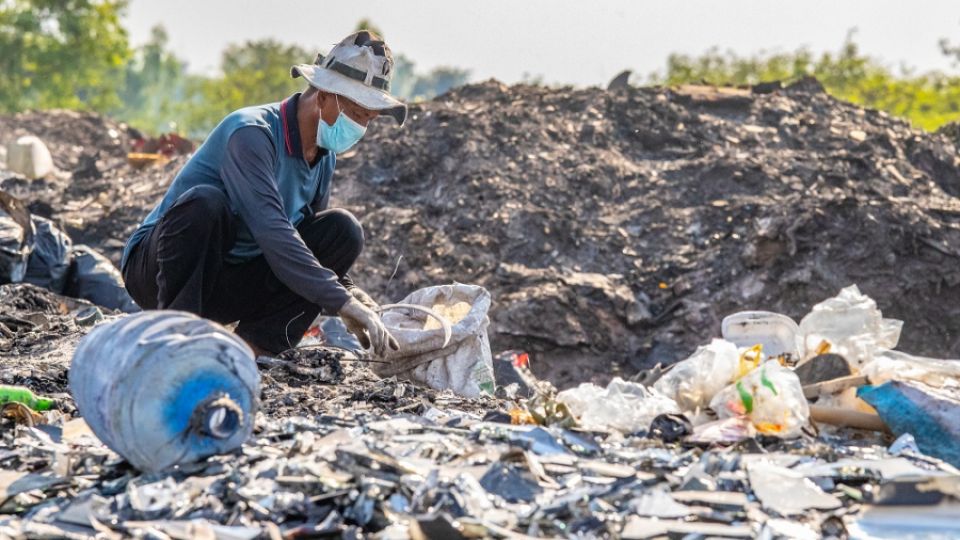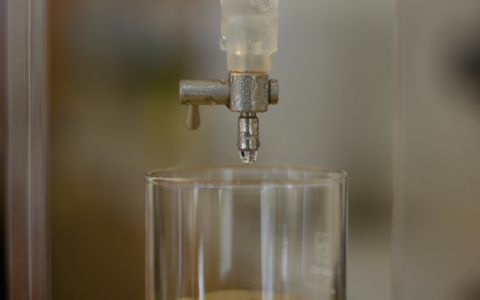The issue of plastic pollution is often oversimplified as if it means only litter. We all know the images of sea turtles or birds entangled in plastic bags, we all know that these creatures often have stomachs full of plastic and almost invisible but even more dangerous microplastics, and it is not just them... But the problems with plastic go much deeper. In fact, often very dangerous chemicals are inextricably linked to plastics, their production, use and waste.
How are plastics made and what are the toxic substances involved?
Plastics are a combination of carbon, in this case from fossil fuels such as oil and gas, and chemicals. Chemicals are added to plastics because they modify a wide range of properties in different ways, such as hardness, durability or colour. This is the only reason why there is such a wide range of plastic products on the market today.
According to the latest knowledge, more than 16,000 different chemicals are used in plastics, of which more than 4,200 are toxic. Nearly 1,000 of these have been linked to cancer, DNA mutations or reproductive problems, and more than 1,000 are toxic to aquatic organisms. Most worryingly, there are around 6,000 other chemicals used in plastics for which we have no information (yet) on their effects and safety. Information on the composition of plastic products is not transparent enough and is often missing altogether, so we usually have no idea what we are dealing with.
Current knowledge suggests that more than 16,000 different chemicals are used in plastics, of which more than 4,200 are toxic. Nearly 1,000 of these have been linked to cancer, DNA mutations or reproductive problems, and more than 1,000 are toxic to aquatic organisms. Most worryingly, there are around 6,000 other chemicals used in plastics for which we have no information (yet) on their effects and safety. Information on the composition of plastic products is not transparent enough and is often missing altogether, so we usually have no idea what we are dealing with.
This problem is exacerbated when we recycle plastic products. Research shows that recycled plastic contains even more toxic chemicals than virgin plastic. These are mixed in a 'toxic cocktail' of completely unknown chemical composition and effects.
What should be done?
Wouldn't it be enough to tighten up chemical regulations and make plastic recycling more efficient? Actually, no. Even if all the toxic chemicals used in plastics were magically replaced tomorrow by completely safe alternatives (which is of course the ideal situation), the huge amounts of plastic currently produced would still harm the environment and, directly and indirectly, human health. This is because it happens throughout the entire life cycle of plastics, including the extraction of the raw materials for plastics (oil and gas), the production of plastics, their use and the stages of their treatment as waste (landfill, incineration, chemical recycling, etc.).
Unfortunately, we still use plastics today where they are neither necessary nor desirable, not to mention all the disposable plastic packaging and products that go to waste almost immediately.In addition, the production of plastics continues to grow exponentially. While some companies have said they are committed to reducing the negative impacts of their activities in recent years, new analysis from Wood Mackenzie shows that voluntary efforts by companies in this area have led to "disappointingly little" progress in the fight against plastics. Moreover, many companies (such as Unilever and Shell) are now subtly reducing or abandoning previously stated targets and commitments.
Attempts by the chemical and fossil fuel industries to downplay the problem and, on the contrary, continue to profit from it were on full display at the final negotiations of the newly drafted Convention in April. Nearly 200 lobbyists, mostly from the chemical and fossil fuel industries, were accredited to attend. They outnumbered independent scientists by about three to one and representatives of indigenous peoples, who are most affected by chemical pollution from plastic production, by about seven to one. You can read more about the April negotiations here.
Why should the new international plastics convention also cover toxic chemicals?
From 2023, the United Nations is preparing a new international convention on plastics that will cover all forms of plastic pollution at all stages of their life cycle.Arnika has been involved in the negotiations on what the convention will look like from the beginning. This is a historic opportunity to intervene in the plastic problem and make a difference.
Toxic substances in plastics are only one piece of the puzzle, but an important one. The plastics issue must not be limited to the problem of waste, either in the context of the new convention under preparation or at any other time. This view is promoted mainly by companies and countries that benefit financially from the extraction of raw materials for the production of plastics, with little regard for the impact on health and nature, such as Saudi Arabia, Iran or Russia. If we accept this view, we will continue to miss a large part of the plastic problem.
Do you want to support the fight against global plastic pollution? Help us financially. Or add your signature to the international call to end the use of dangerous PFAS chemicals!

The project was supported by the Ministry of the Environment of the Czech Republic. The project is not necessarily reflecting the views of the Ministry of the Environment.







